Explore a variety of plants similar to String of Pearls in our comprehensive guide. Discover alternative options to diversify your indoor garden and add unique charm to your space.
If you’re a fan of the delightfully trailing String of Pearls plant (Senecio rowleyanus), you’ll be thrilled to know that there are several other gorgeous succulents that share its charming, pea-like foliage. These trailing succulents not only add a touch of whimsy to your indoor or outdoor gardens but also require relatively low maintenance, making them perfect for beginner and experienced plant enthusiasts alike.
What is a String of Pearls Plant?
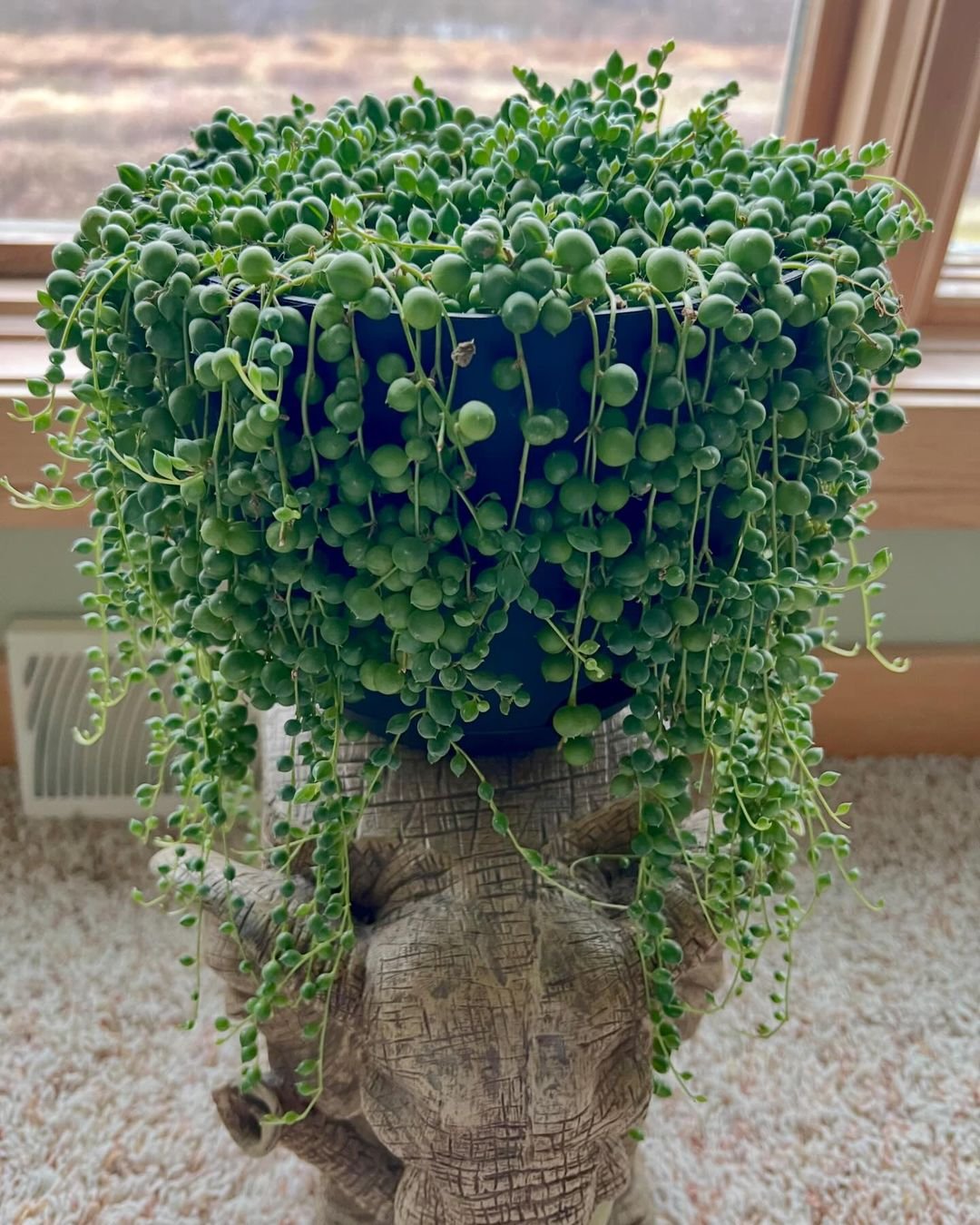
Here’s a concise information chart for the String of Pearls plant:
| Attribute | Value |
|---|---|
| Botanical Name | Senecio rowleyanus |
| Common Name | String of Pearls |
| Plant Type | Succulent trailing vine |
| Zones | 9-11 (USDA) |
| Sun Exposure | Bright, indirect sunlight or partial shade |
| Soil Type | Well-draining, sandy soil |
| Watering | Low, allow soil to dry between watering |
| Growth Habit | Trailing, cascading |
| Height/Spread | Up to 12 inches tall, spreading |
| Special Features | Round, bead-like leaves resembling pearls |
Before we dive into the list of similar plants, let’s briefly discuss the beloved String of Pearls. Native to Southwest Africa, this little gem belongs to the Asteraceae family and is prized for its cascading stems adorned with plump, green “pearls” that resemble tiny peas. With proper care, including bright, indirect light and well-draining soil, String of Pearls can grow up to 3 feet long, creating a stunning, trailing display.
1. String of Bananas (Senecio radicans)
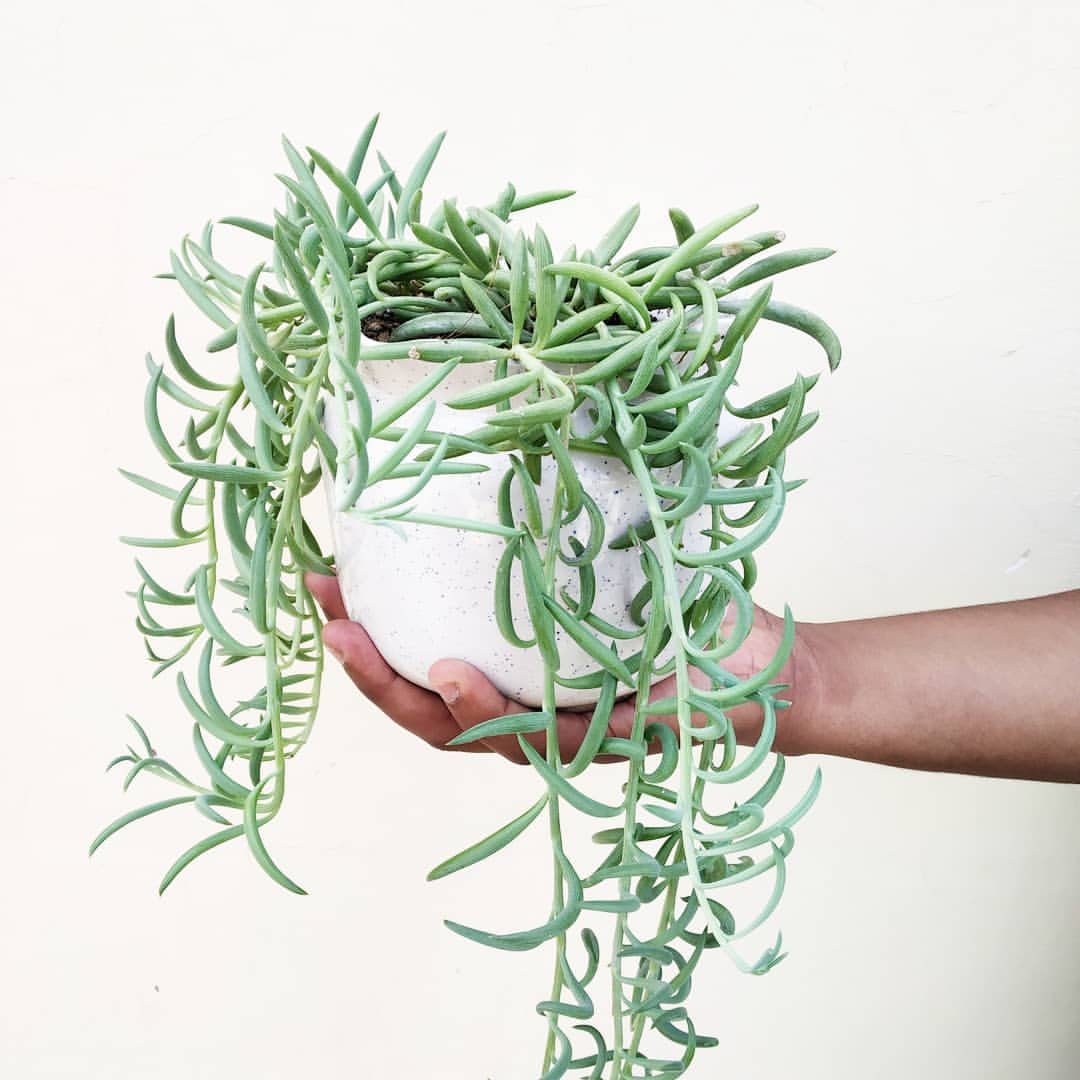
Here’s a short information chart for the String of Bananas plant:
| Attribute | Value |
|---|---|
| Botanical Name | Senecio radicans |
| Common Name | String of Bananas |
| Plant Type | Succulent |
| Zones | 10-11 (USDA) |
| Sun Exposure | Bright, indirect sunlight |
| Soil Type | Well-draining |
| Watering | Low |
| Growth Habit | Trailing |
| Height/Spread | Up to 12 inches tall, spreading |
| Special Features | Unique banana-shaped leaves, drought tolerant |
As the name suggests, the String of Bananas is a close relative of the String of Pearls, sharing the same genus. However, instead of round “pearls,” this plant boasts curved, banana-shaped leaves that dangle gracefully from its vining stems. Like its cousin, String of Bananas requires bright, indirect light and well-draining soil to thrive.
2. String of Nickels (Dischidia nummularia)
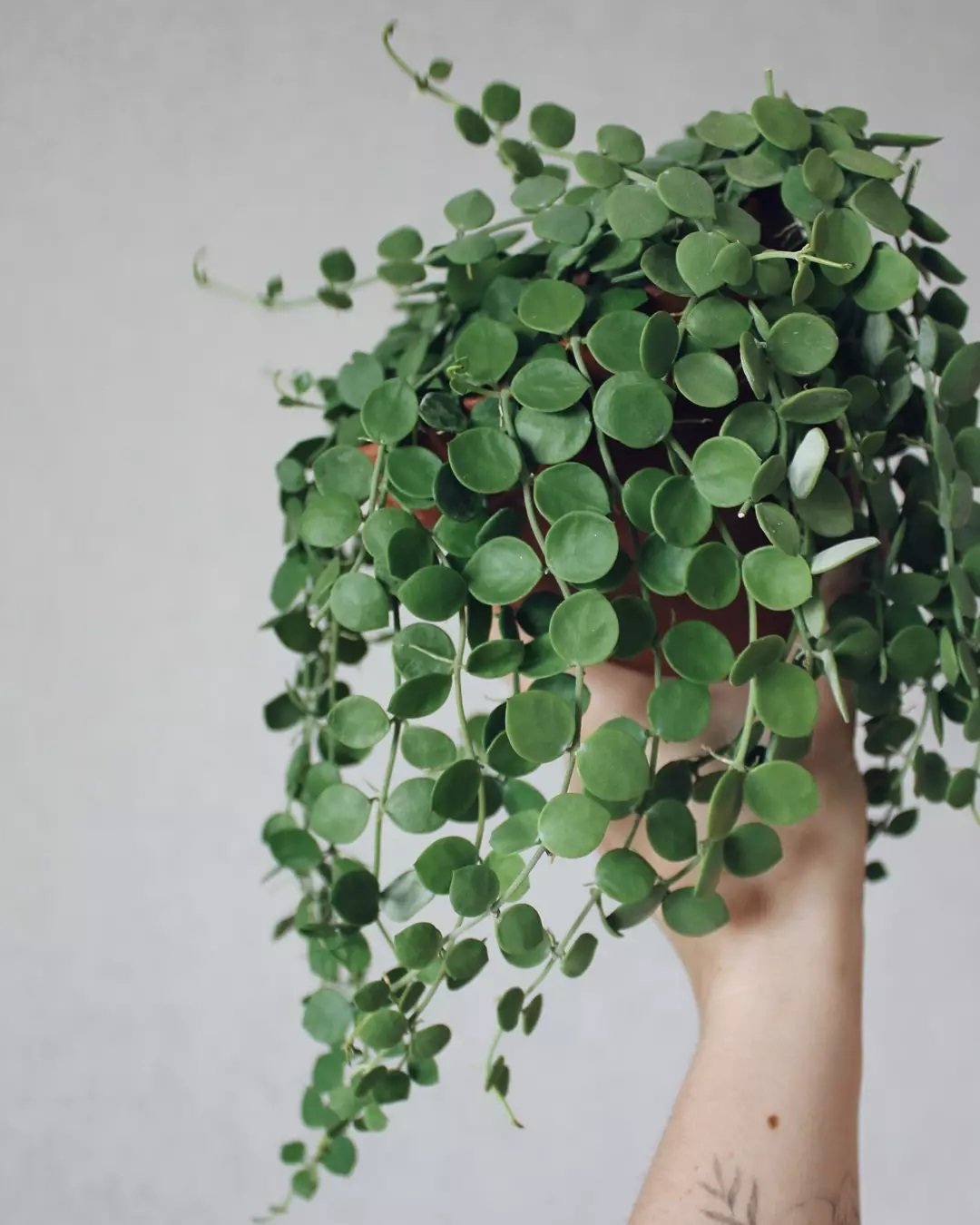
Here’s a short information chart for the String of Nickels plant:
| Attribute | Value |
|---|---|
| Botanical Name | Dischidia nummularia |
| Common Name | String of Nickels |
| Plant Type | Epiphytic succulent |
| Zones | 10-11 (USDA) |
| Sun Exposure | Bright, indirect sunlight or partial shade |
| Soil Type | Well-draining, porous |
| Watering | Moderate |
| Growth Habit | Trailing |
| Height/Spread | Up to 12 inches tall, spreading |
| Special Features | Round, coin-like leaves |
If you’re looking for a plant that’s truly unique, the String of Nickels might be just what you need. Hailing from Southeast Asia, this curious succulent features flat, round leaves that resemble tiny coins strung together along its vines. String of Nickels prefers indirect light and high humidity, making it an excellent choice for terrariums or bathrooms.
3. String of Turtles (Peperomia prostrata)
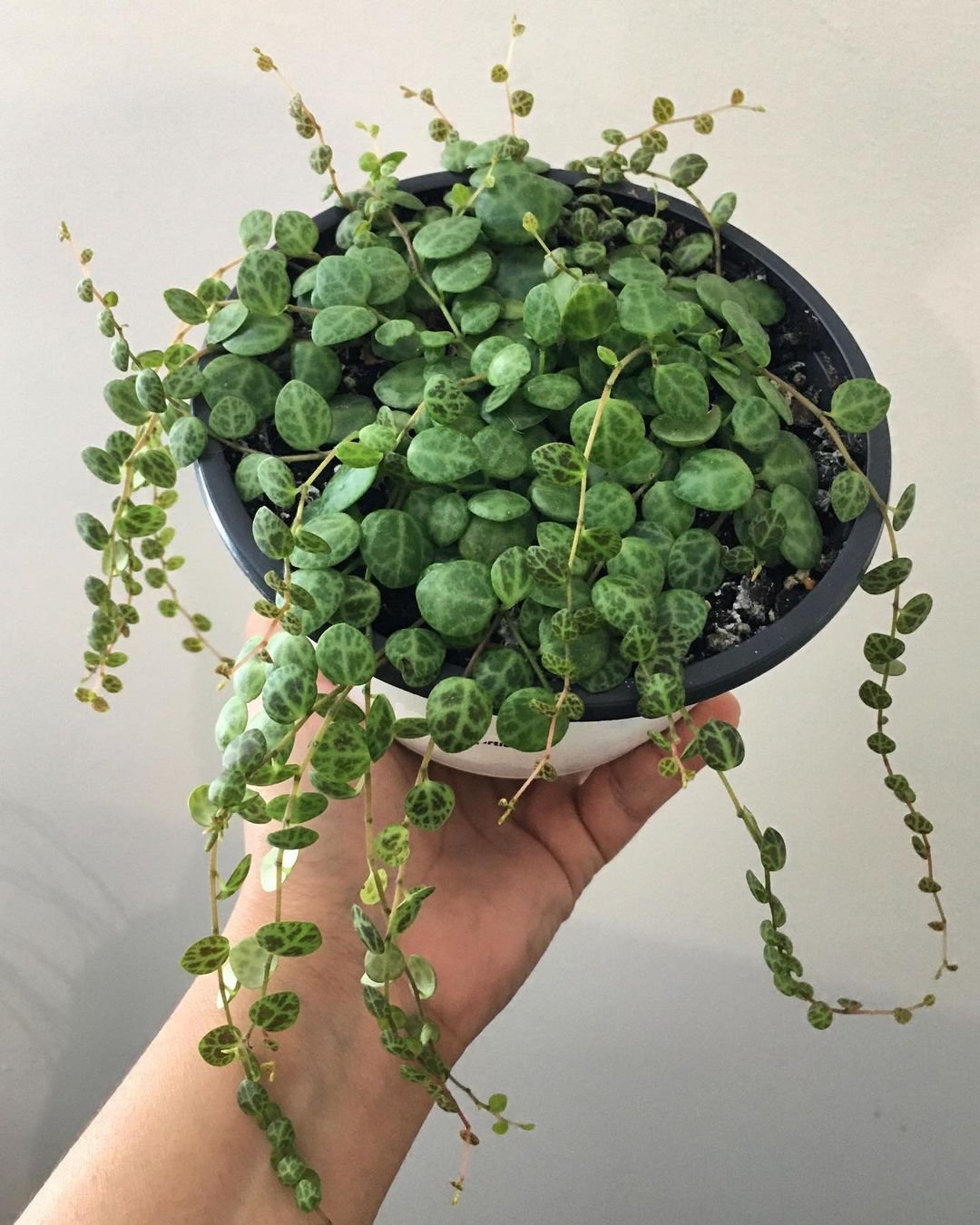
Here’s a concise information chart for the String of Turtles plant:
| Attribute | Value |
|---|---|
| Botanical Name | Peperomia prostrata |
| Common Name | String of Turtles |
| Plant Type | Herbaceous perennial |
| Zones | 10-12 (USDA) |
| Sun Exposure | Bright, indirect sunlight or partial shade |
| Soil Type | Well-draining, fertile |
| Watering | Moderate |
| Growth Habit | Trailing, spreading |
| Height/Spread | Up to 6 inches tall, spreading |
| Special Features | Small, turtle-shell patterned leaves |
The String of Turtles, also known as the Trailing Jade, is a delightful little plant that will undoubtedly steal your heart. Its small, round leaves are arranged in a pattern resembling tiny turtles strung together, giving it an endearing and whimsical appearance. This variety thrives in bright, indirect light and well-draining soil, just like the String of Pearls.
4. String of Hearts (Ceropegia woodii)
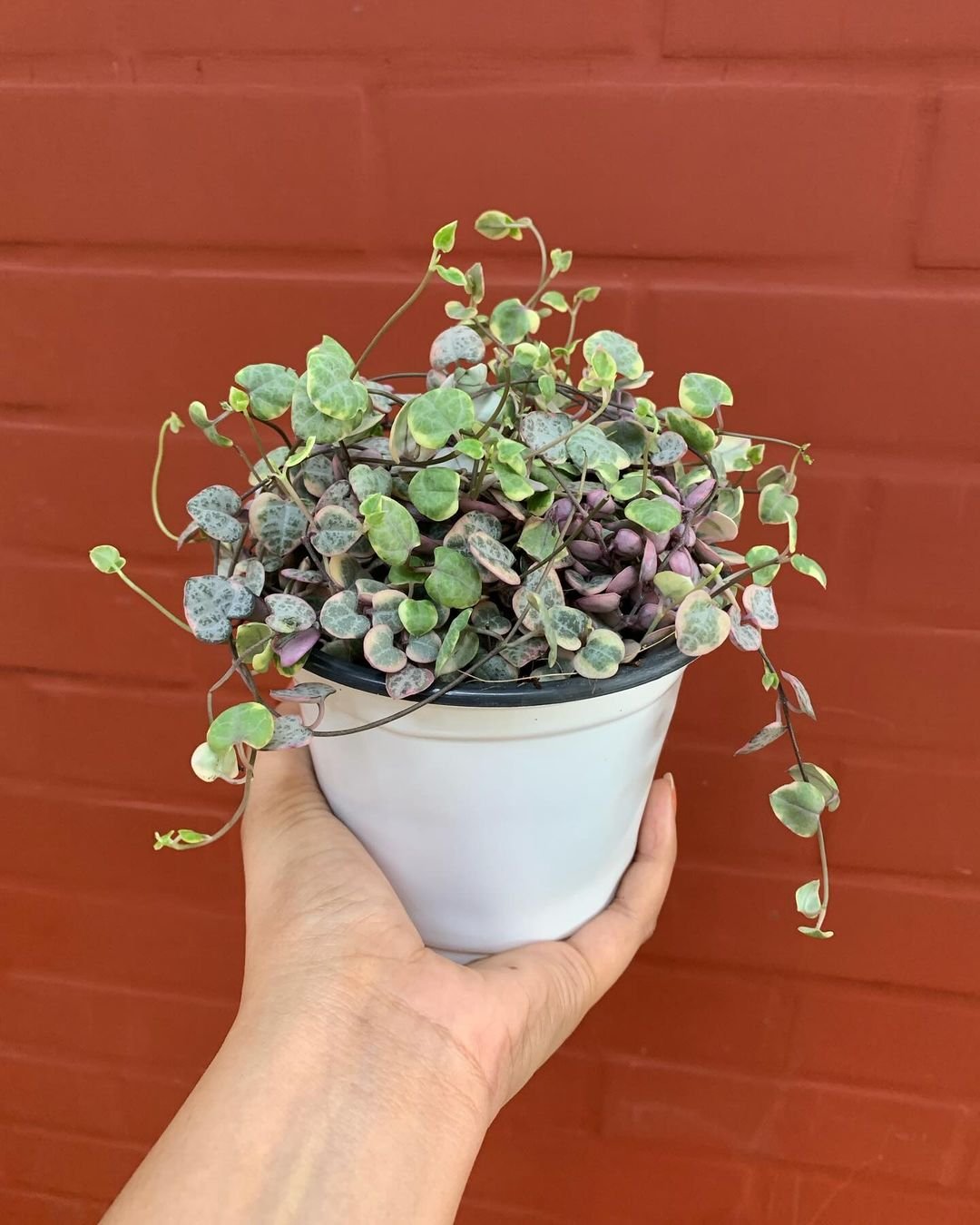
Here’s a concise information chart for the String of Hearts plant:
| Attribute | Value |
|---|---|
| Botanical Name | Ceropegia woodii |
| Common Name | String of Hearts |
| Plant Type | Succulent trailing vine |
| Zones | 10-12 (USDA) |
| Sun Exposure | Bright, indirect sunlight or partial shade |
| Soil Type | Well-draining, sandy soil |
| Watering | Moderate, allow soil to dry between watering |
| Growth Habit | Trailing, cascading |
| Height/Spread | Up to 12 inches tall, spreading |
| Special Features | Heart-shaped leaves, delicate appearance |
With its delicate, heart-shaped leaves trailing gracefully from slender stems, the String of Hearts is a true showstopper. This charming succulent is native to South Africa and requires bright, indirect light and well-draining soil to maintain its lush, cascading appearance.
5. String of Pickles (Senecio rowleyanus ‘Bean Pickleplant’)
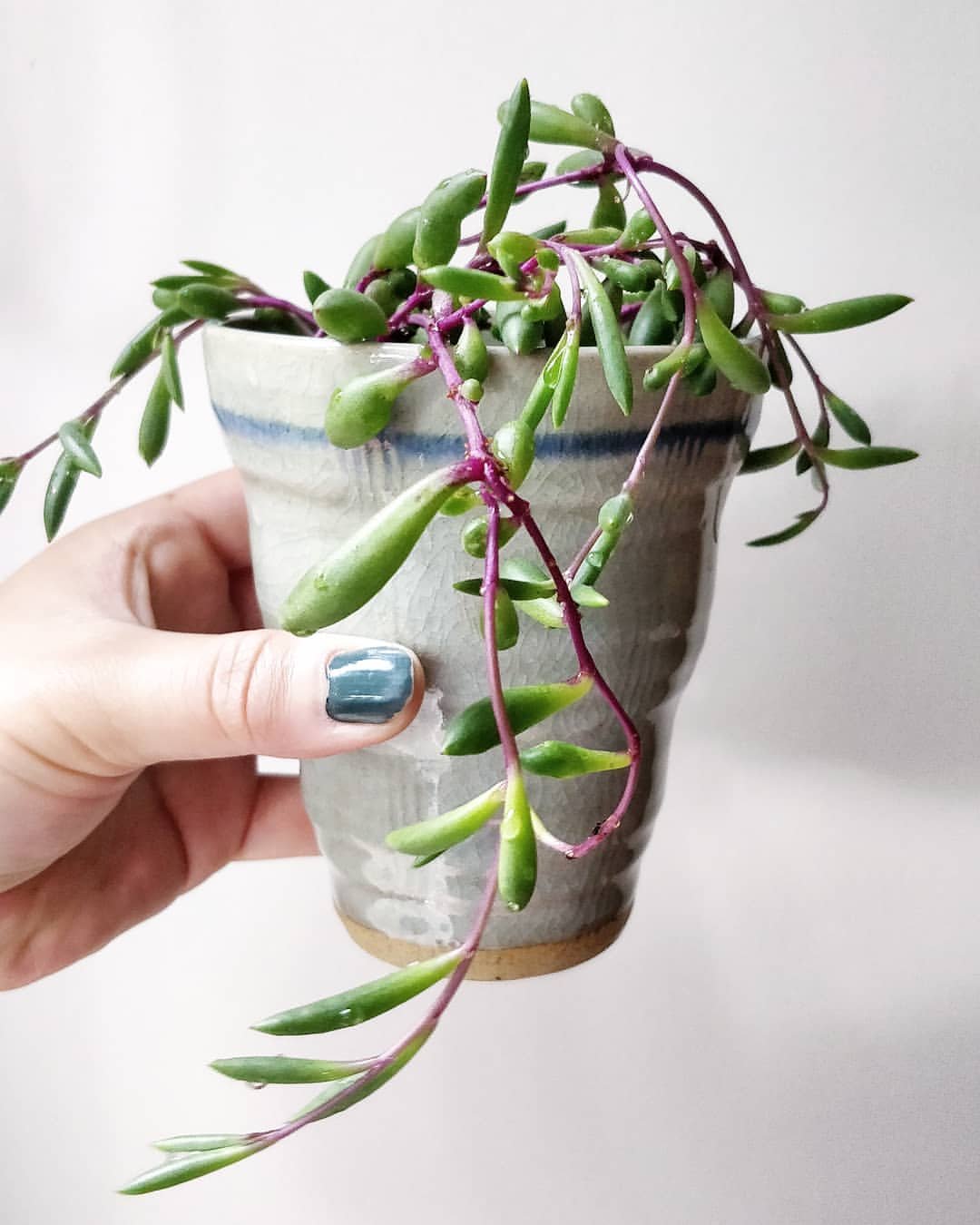
Here’s a concise information chart for the String of Pickles plant:
| Attribute | Value |
|---|---|
| Botanical Name | Senecio rowleyanus ‘Bean Pickleplant’ |
| Common Name | String of Pickles |
| Plant Type | Succulent trailing vine |
| Zones | 9-12 (USDA) |
| Sun Exposure | Bright, indirect sunlight or partial shade |
| Soil Type | Well-draining, sandy soil |
| Watering | Low, allow soil to dry between watering |
| Growth Habit | Trailing, cascading |
| Height/Spread | Up to 12 inches tall, spreading |
| Special Features | Small, bead-like leaves resembling pickles |
While not technically a separate species, the String of Pickles is a unique cultivar of the beloved String of Pearls. As the name implies, its plump, cylindrical leaves resemble tiny pickles strung together on delicate vines. With the same care requirements as its parent plant, the String of Pickles adds a quirky and fun touch to any collection.
Tips for Caring for Trailing Succulents
While each of these trailing succulents has its own unique quirks, there are some general care tips to keep in mind:
Light Requirements
Most trailing succulents thrive in bright, indirect light. Avoid direct sunlight, as it can scorch their delicate leaves. East or west-facing windows are typically ideal, or you can use grow lights to supplement natural light.
Watering Needs
Like most succulents, these plants prefer their soil to dry out completely between waterings. During the growing season (spring and summer), water when the top inch or two of soil is dry. In winter, reduce watering to prevent root rot.
Soil and Drainage
Well-draining soil is crucial for the health of trailing succulents. Use a cactus or succulent potting mix, or create your own by mixing regular potting soil with perlite or sand.
Potting and Pruning
These plants tend to grow quite slowly, so repotting is only necessary every few years. When pruning, remove any dead or damaged stems or leaves to maintain their tidy appearance.
Propagation
Most trailing succulents can be easily propagated from stem cuttings or leaves. Simply allow the cutting to callus over for a few days before placing it in well-draining soil.
Common Issues and Solutions
Shriveled or Wrinkled Leaves
This is usually a sign of underwatering. Increase your watering frequency and ensure the soil is drying out completely between waterings.
Yellowing or Mushy Leaves
This can indicate overwatering or poor drainage. Allow the soil to dry out more between waterings and consider repotting in a well-draining succulent mix.
Leggy or Stretched Growth
If your plant is stretching out and becoming leggy, it’s likely not receiving enough light. Move it to a brighter location or supplement with grow lights.
Whether you’re drawn to the String of Pearls for its unique, trailing charm or simply love the allure of these whimsical succulents, there’s no denying the appeal of adding one (or more!) to your collection. From the String of Bananas to the String of Pickles, these plants offer a delightful twist on the classic String of Pearls, each with its own distinctive foliage and character. With the proper care and a bit of patience, you’ll be rewarded with a stunning display of trailing, pea-like foliage that will captivate you and your guests for years to come.

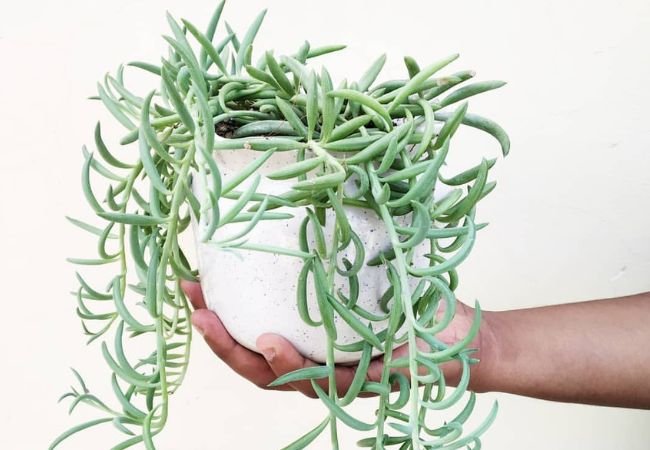






Leave a Reply